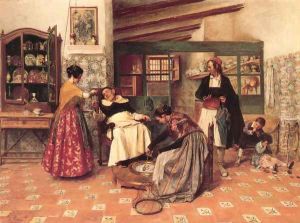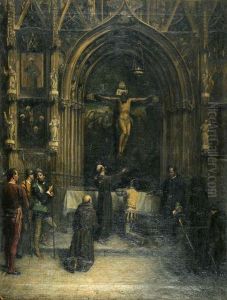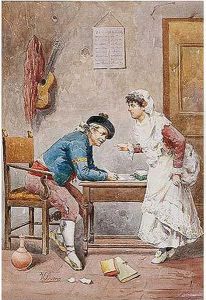Vicente Borras y Mompo Paintings
Vicente Borrás y Mompó was a Spanish painter born on September 23, 1866, in Valencia, Spain. He is recognized for his contributions to the genres of portrait and landscape painting, as well as for his depictions of regional Spanish life, particularly Valencian customs and traditions. Borrás y Mompó developed his artistic skills in an era where various styles, including Impressionism and Realism, influenced the art world.
As a young man, Borrás y Mompó studied art at the School of Fine Arts of San Carlos in Valencia. His talent was evident early on, and he was awarded a grant to further his studies in Rome. During his time in Italy, Borrás y Mompó was exposed to classical art and Renaissance masters, which had a lasting influence on his style and technique. He absorbed the rich artistic traditions of Italy, which would later blend with his love for his Spanish heritage in his artworks.
Upon returning to Spain, Borrás y Mompó became part of the artistic scene in Valencia and frequently participated in national exhibitions. His works often featured scenes of everyday life in Valencia, capturing the essence of the region's culture, festivities, and its people. He was particularly adept at portraiture, where his ability to render the human figure with sensitivity and realism won him accolades and commissions.
Throughout his career, Borrás y Mompó received numerous awards and honors for his work. He was a member of various artistic societies and his paintings were sought after by collectors and art enthusiasts of the time. Despite his success, he maintained a humble approach to his art, always striving to portray the truth and beauty he saw in the world around him.
Vicente Borrás y Mompó's legacy is preserved in the collections of several museums and in the cultural history of Valencia. His dedication to his craft and his representation of Spanish life have left an indelible mark on the art world. He passed away on February 17, 1925, in his hometown of Valencia. His work continues to be appreciated for its historical value and its artistic merit, reflecting the cultural vitality of Spain at the turn of the 20th century.



